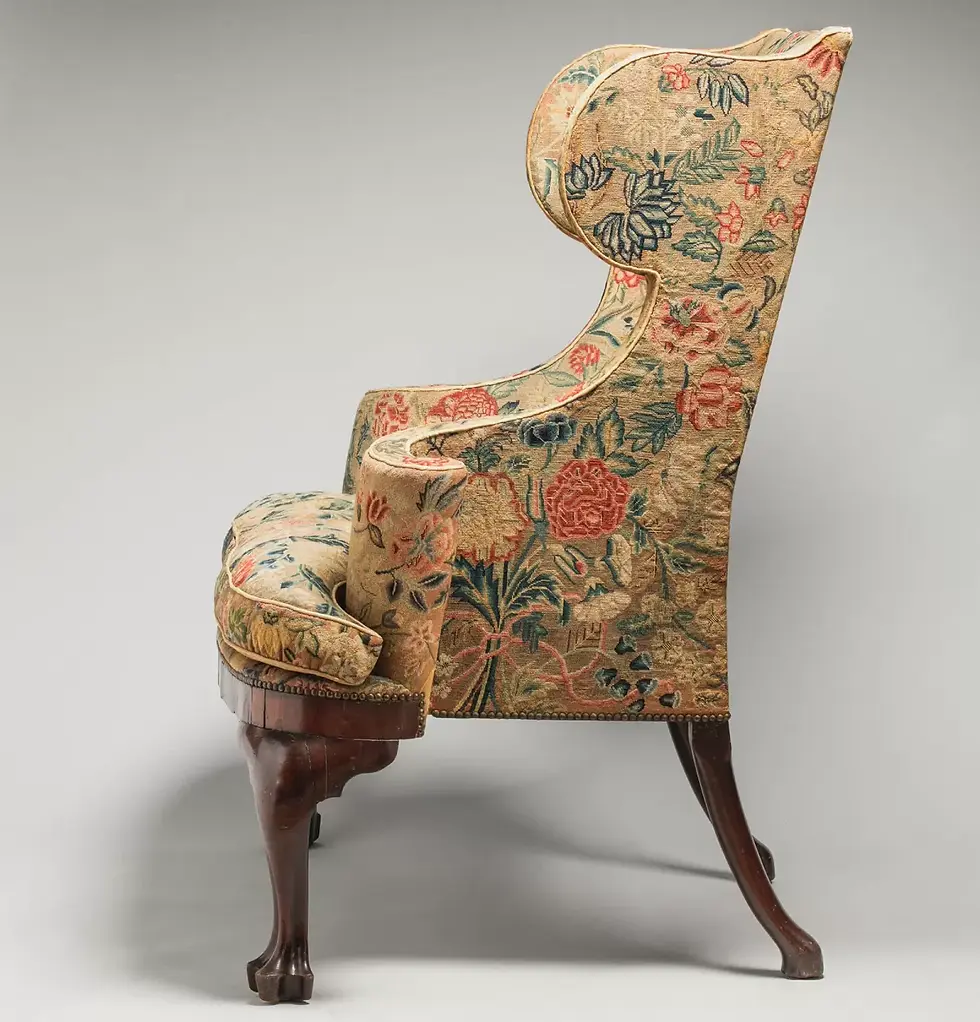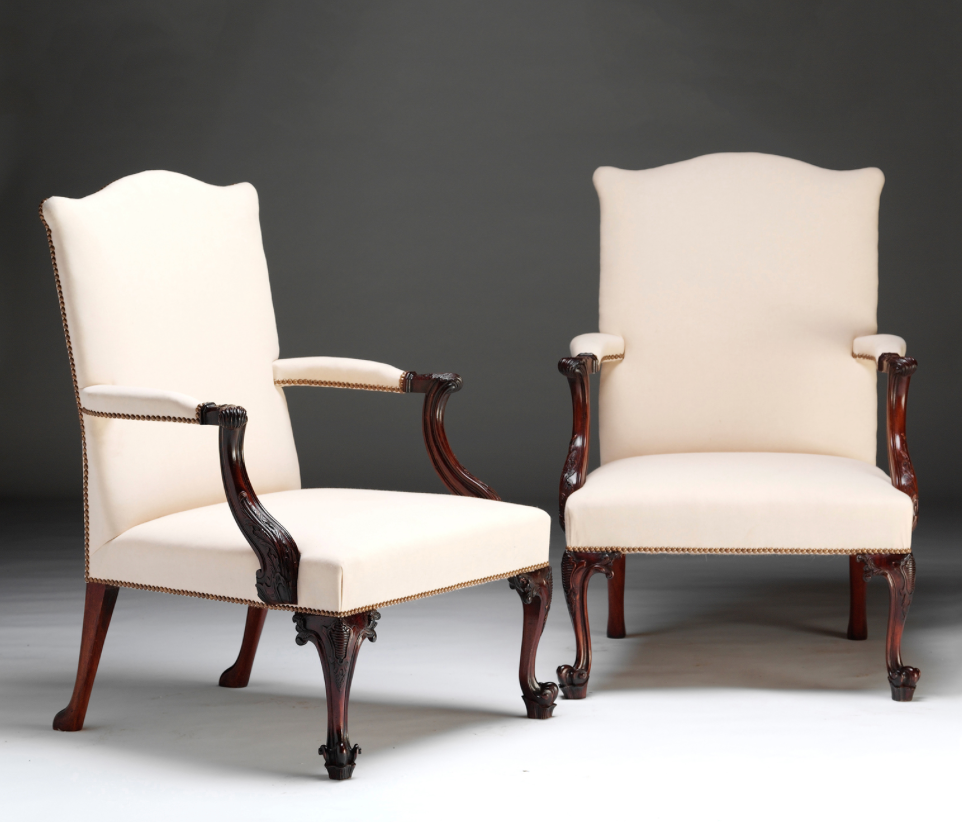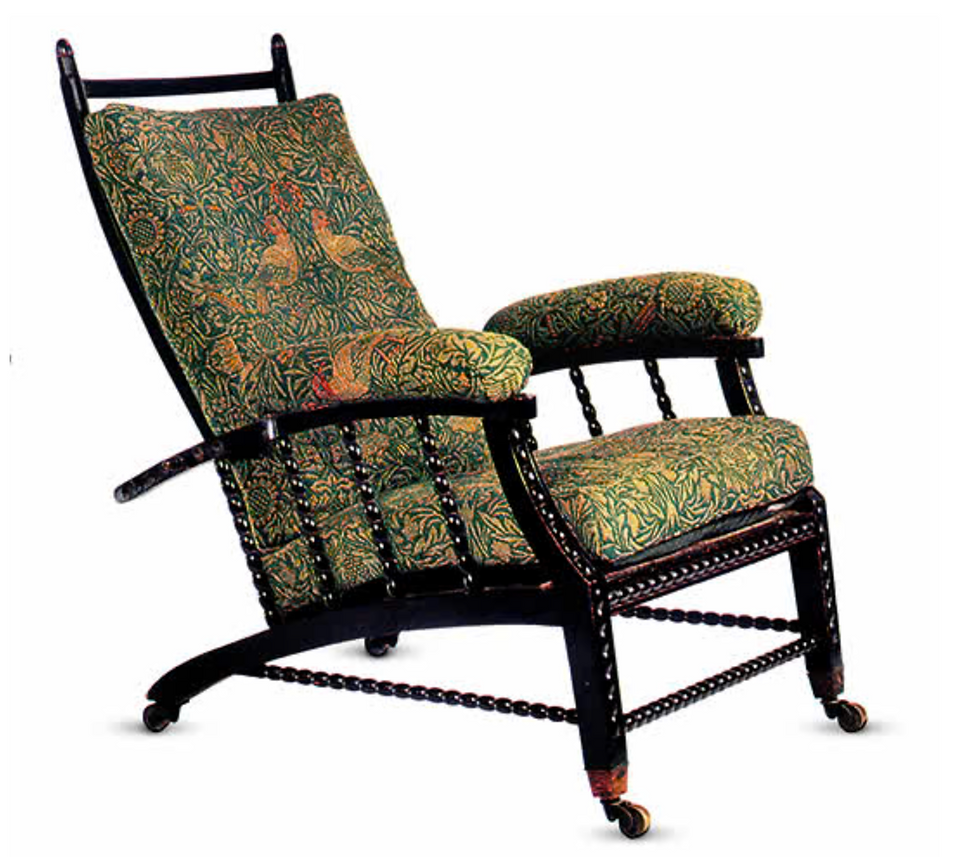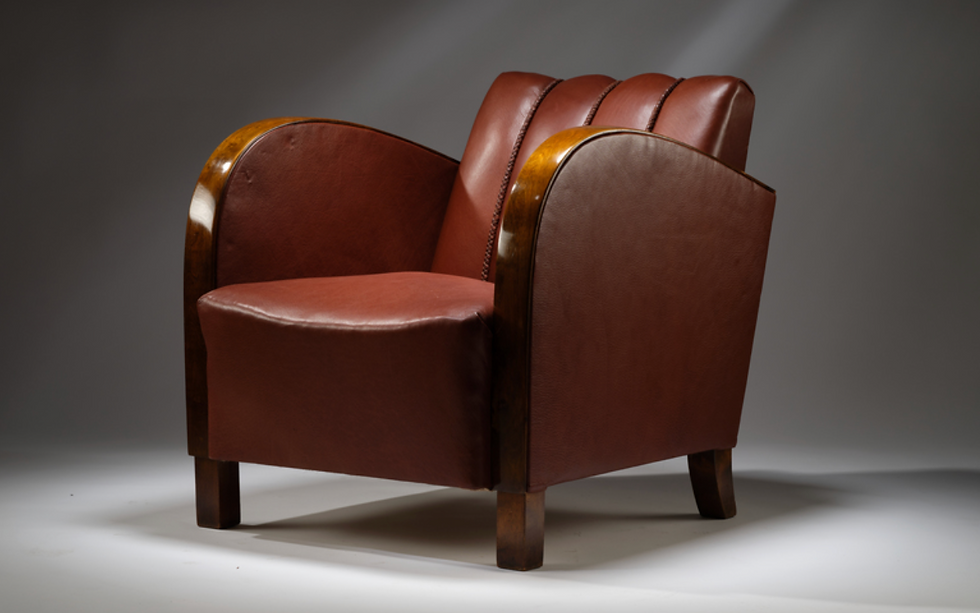Featured Item Spotlight: The Art of Seating - A Guide to Antique Armchair Styles
- Suzanne Branfoot
- Aug 15
- 5 min read
From stately drawing rooms to cosy corners, antique armchairs are more than just a place to sit - they reflect changing tastes, craftsmanship, materials, and social customs across centuries. This illustrated guide offers insight into the most iconic styles and the specific types of chairs popular within each period. A selection of our armchairs can be found in this link: https://www.theantiqueshound.com/armchairs

1. Queen Anne (Early 18th Century)
Key features: Curved lines, cabriole legs, pad feet, a softly rounded back.
Fireside Chairs (Wingback). From this era emerged the classic wingback or fireside chair - high‑backed with “wings” to capture warmth and shield from drafts. This style marked a shift towards comfort and elegance with the attractive "wingback" silhouette. Queen Anne chairs were upholstered, often crafted from walnut wood with restrained ornamentation, cabriole legs and pad feet. They became synonymous with comfort in front of hearths and are now versatile in both traditional and modern interiors.

Cabriole legs were unique to the Queen Anne style, having never been used before. Following in the trend of having carved animal feet, this furniture's legs were inspired by the rear legs of a leaping goat. A balance was created in the chair by the way the legs were cut so that even with slim legs it could support the heavy seat without the need for a stretcher. The woods used to create these pieces were always rich in colour and patina and carpenters often embellished them with carved fan or shell motifs. The woods favoured by these craftsmen include cherry, maple and walnut.
.
2. Chippendale (Mid 18th Century)
Key features: Bold carving, ball-and-claw feet, rich mahogany construction.
Often built of mahogany with boldly carved frames and claw‑and‑ball fee, Gainsborough chairs from this era are wide‑seated with high backs and low arms, upholstered in leather or brocade.

Named after the celebrated furniture designer, Thomas Chippendale, this style reflects a fusion of Gothic, Rococo and Chinese influences.
3. Hepplewhite (Late 18th Century)
Key features: Elegant and slim profile, shield or oval-shaped backs, straight tapered legs.
Hepplewhite forms include shield‑back side chairs and slender armchairs with tapered legs - a refined counterpoint to Chippendale’s heavier forms. They were often found as occasional seating in parlours or dressing rooms.

.
4. Sheraton (Late 18th – Early 19th Century)
Key features: Square or rectangular backs, fluted legs, inlaid wood designs.
Sheraton armchairs, named after the English cabinetmaker Thomas Sheraton (1751 – 1806) who was one of the “big three” furniture makers of the 18th century, along with Thomas Chippendale and George Hepplewhite. These chairs, produced from c. 1785 to 1820, are characterised by neoclassical proportions and slim, straight tapered legs that replaced the heavier cabriole legs of the mid 18th century. Sheraton's furniture featured the use of exotic hardwoods such as Satinwood, Rosewood and Ebony and his marquetry motifs include drapery swags, ribbons, fans, and urns. An 18th-century Sheraton armchair, with its elegant lines and delicate proportions, can be a versatile addition to the home now. It would be particularly well-suited for bedrooms, entrance halls / landing, but it can also function as a proper dining chair or desk chair.

5. Regency (Early 19th Century)
Key features: Grecian and Egyptian influences, sabre legs and rolled arms.
Regency fireside & accent chairs: Inspired by ancient Greece and Egypt, Regency armchairs often feature sabre legs, rolled arms, classical motifs. They were typically made from Rosewood or mahogany and often include brass inlays or carved lion's heads. Often upholstered or with a squab cushion they served as compact fireside chairs with a dramatic profile. These beautiful chairs are a great all-rounder in today's home, working with traditional and modern interior designs.

6. Victorian (Mid‑Late 19th Century)
Key features: Overstuffed upholstery, dark woods, tufted backs, ornate carvings.
Nursing Chairs, Button‑Back Fireside Chairs, and Howard & Sons armchairs: Victorian nursing chairs were compact, armless, sprung‑seat designs, low‑to‑the‑ground to allow interaction with children without the need for bending (due to heavy clothing and corsets). These chairs were often upholstered in velvet, with ornate turned legs or cabriole forms. Similarly, Slipper chairs were also small, armless, low-seated chairs designed for dressing or slipping on shoes - often used in bedrooms or nurseries.

Balloon-back shapes and tufted upholstery offer maximum comfort, and typify the Victorian aesthetic together with the era's love of luxury and detail.

Howard & Sons Armchairs: Antique Howard & Sons armchairs are some of the most sought-after and comfortable examples of English upholstered furniture. Founded in 1820, Howard & Sons became renowned for crafting exceptionally well-made armchairs and sofas, many of which remain in high demand among collectors, interior designers, and antique dealers today.
Key features: Deep down-filled cushions; distinctively low, sweeping scroll arms that curve outward; splayed back legs and brass castors stamped “Howard & Sons” or “Howard Chairs Ltd”; solid beech frames built to last; shallow seat pitch & sloping back.
In some cases, antique Howard & Sons armchairs now out-price the new ones and they are always in high demand at auction.

7. Arts & Crafts (Late 19th – Early 20th Century)
Key features: Straight lines, visible joinery, solid oak or walnut, minimal decoration in favour of showcasing craftsmanship.
A reaction against mass production, these early adjustable chairs - first produced by William Morris around 1866 feature pegged reclining backs between wooden arms, and heavy cushions for comfort. They paired with the simpler, honest joinery aesthetic of Arts & Crafts interiors.

8. Art Deco (1920s–1930s)
Key features: Bold geometry, exotic veneers, chrome or lacquered finishes.
Art Deco is an art and design movement that emerged after World War I in the 1920s. The movement marked a break with previous styles by emphasising modernity, geometry, and luxury and became symbols of the era's prosperity and artistic innovation.
Art Deco armchairs are recognisable by their distinctive features. They are often made from high-quality materials such as leather, velvet, or precious woods such as ebony or rosewood. One of the most striking features is the use of bold geometric shapes.
Stylized patterns and brass or chrome inlays are frequently used to add a touch of luxury to these chairs. The clean lines and elegant details make each Art Deco chair a work of art in itself, forming glamorous statement pieces.

Final Thoughts...
Antique armchairs are more than just design statements, they are touchpoints in the timeline of furniture history. Each period not only had distinctive design language but also specific types of armchairs suited to lifestyles - nursing, fireside lounging, dressing, or social conversation. These forms reflected both function and fashion. Whether you're hunting for a rare find or simply want to better understand the pieces in your home, knowing the hallmarks of each style can help you spot authenticity, value and character.
Do you have a favourite antique chair? Tag us on Instagram @theantiqueshound to share your treasure - we love seeing beautiful finds from fellow hounds! A selection of our available armchairs can be found on our website at the following link: https://www.theantiqueshound.com/armchairs





Comments